This is a page within the www.staffshomeguard.co.uk website. To see full contents, go to SITE MAP.
MEMORIES
AND INFORMATION - STAFFORDSHIRE HOME GUARD
34th STAFFORDSHIRE (BILSTON) BATTN.
Major HORACE JUDGE GEORGE
BATTALION DISPLAY -
1944
|
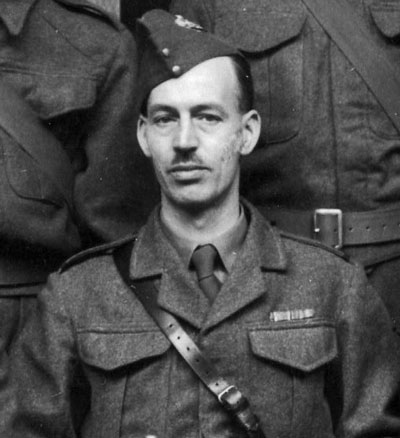 The
34th Staffordshire
(Bilston) Battalion of the Home Guard
had amongst its members Major Horace
Judge George. The
34th Staffordshire
(Bilston) Battalion of the Home Guard
had amongst its members Major Horace
Judge George.
Major George was initially a Platoon
Commander but later became a Company Commander and second
in command to the Battalion C.O.,
Lt.-Col. J Pitkeathley, M.C.
We
are fortunate that the family archive of Horace George and
his successors still include a quantity of images which
provide further glimpses of the life of this Battalion and
these unique photographs are all reproduced within this
website, as follows:
Battalion Display
- Hickman Park - 1944 (this
page)
Bilston Home Guard - Main Page
Battalion Parade and Review - Bilston Town Centre - 1943
Major Horace Judge George -
The Coseley
Home Guard
|
BATTALION DISPLAY - HICKMAN
PARK, BILSTON - 1944 |
The images below show a
major 34th Battalion display in Hickman Park,
Bilston. Expert opinion dates it as taking place
in the summer of 1944 and it is likely to have
been organised in support of "Salute the Soldier
Week", a national fundraising and savings scheme
which took place in the spring and summer of that
year.
(Such "Weeks" were a regular
feature of the war years, when targets were set
for communities throughout the country: the level
of these targets was astonishing and the result
was almost always in excess of the original aim.
The Bilston target/achievement in 1944 is unknown
but as an indication, amongst West Midlands towns,
the achievement for Halesowen that year was £1.7m
- in 2016 money, around £52m. And in support of
"Wings for Victory" in the previous year, Dudley
raised £725,000 - enough for 140 Spitfires and the
equivalent of £23m in 2016).
Displays
of this type were a fairly regular feature of Home
Guard activities. They kept the Home Guard well in
the public eye locally and encouraged recruitment,
they boosted public morale as well as that of
their own men and they helped fundraising, both
for national schemes and for their own Battalion
welfare funds. If the Home Guard had ever been a
joke to the public at large, the display like this
one would have given a strong indication of the
level of professionalism achieved by the service,
the equipment at its disposal and the likely
effectiveness of the force if the need arose.
N.B. If you wish to view
higher
definition versions
of any of the following
images, please click on the particular image.
Depending on the device you are using, it will
then display either as a magnified image or as a
higher definition image capable of magnification.
|
| |
The first images are clearly a
demonstration of how far the Home Guard had come
since its earliest days in May 1940 when France
was about to fall, the Army was retreating to
Dunkirk and an invasion, suddenly and
inconceivably, became a possibilty - or even a
probability.
First, May and June 1940, men
volunteering, armed with nothing save a brassard
and a makeshift weapon, or perhaps just a dummy
rifle.... |
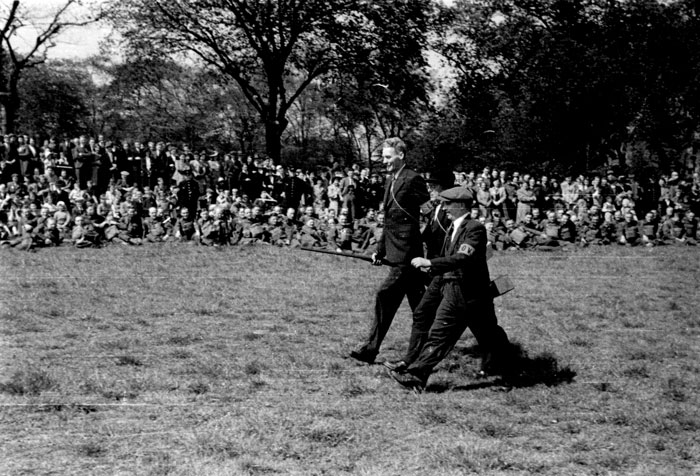  |
|
Still the early days, still the LDV
rather than the Home Guard, but now with uniform
and some weapons..... |
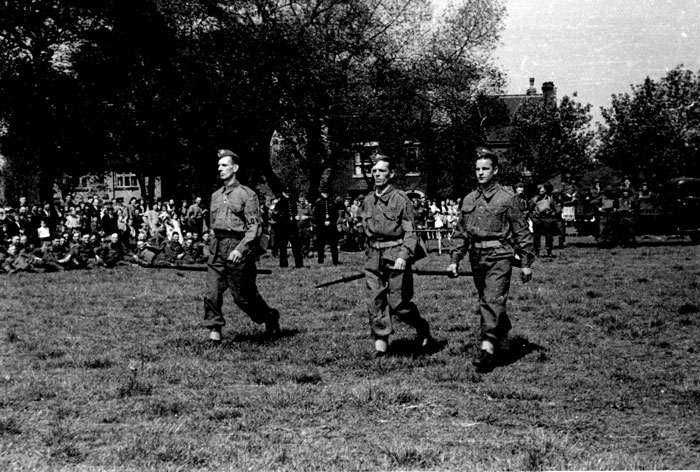  |
|
And, much later, now a fully armed and
effective force..... |
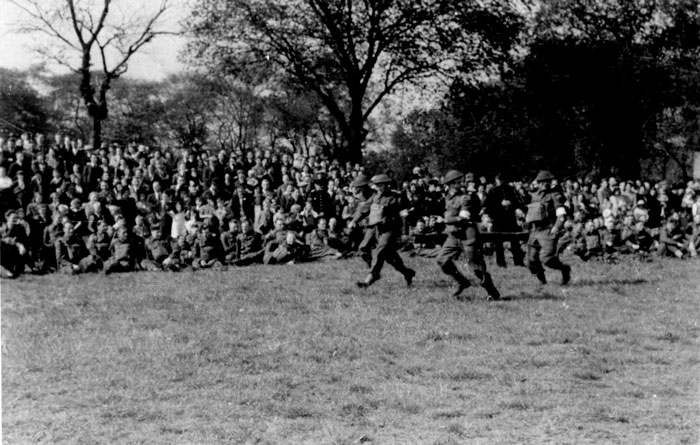  |
And loosely assembled together in
front of the crowd.
First, the "Then" - front
row, the first volunteers still in "civvies",
with, if they were lucky, just makeshift arms;
then, only weeks later, in denims (is the lad in
the second row holding a pike?); then in
battledress and with improving weaponry.
And
finally, the "Now": at the rear, fully
equipped and trained, are an effective infantry
fighting force. The man on the extreme right at
the rear of the group is equipped with a type 38
field radio on his l.h. front/side. |
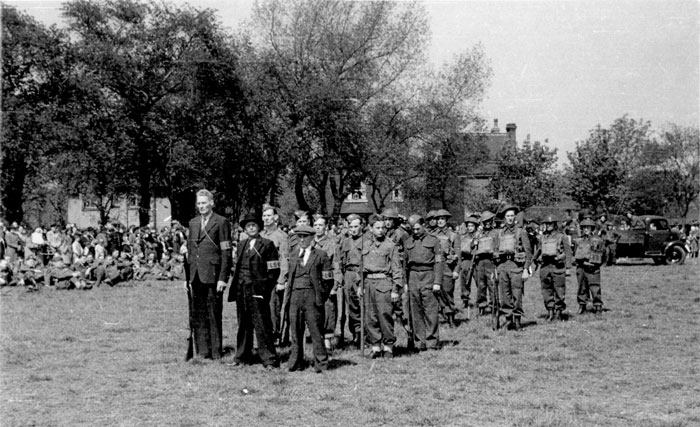  |
And more of the "Now"......
The
Blacker Bombard, otherwise known as the Spigot
Mortar, being demonstrated.... |
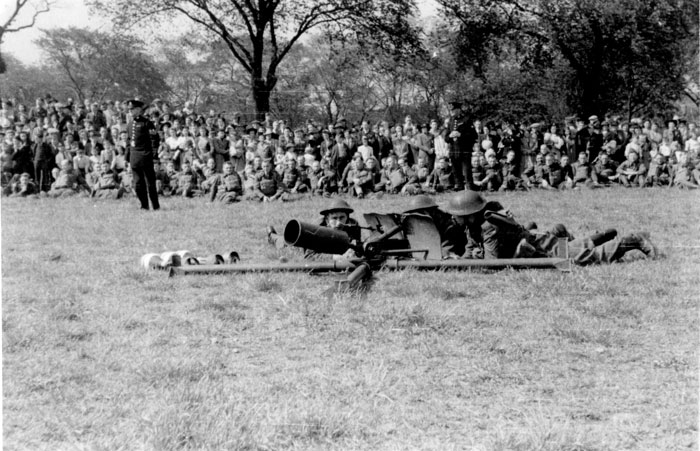  |
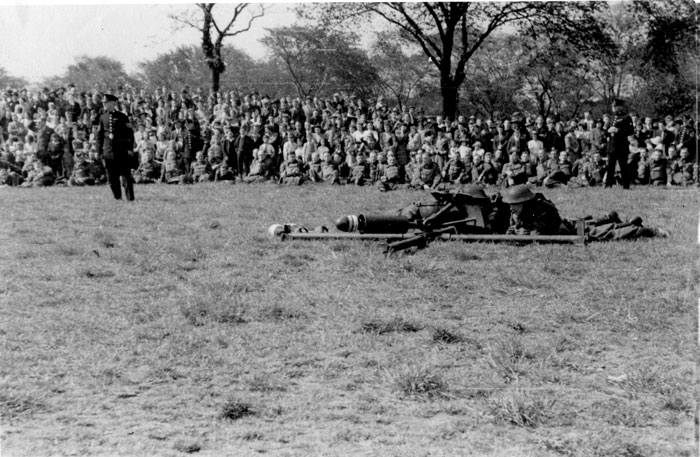  |
|
The Battalion Despatch Riders
demonstrate their skills..... |
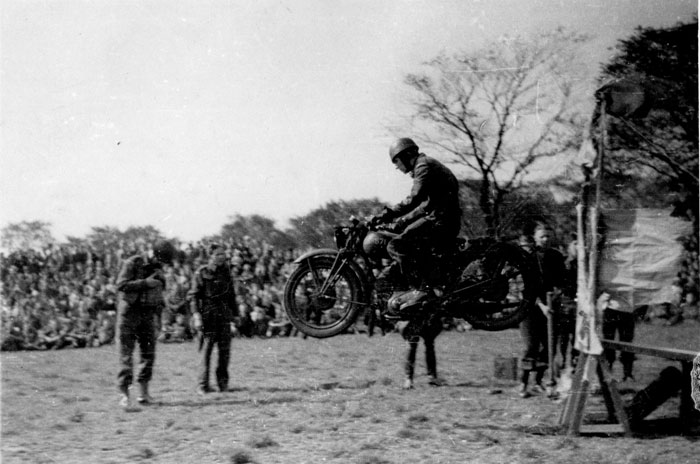  |
  |
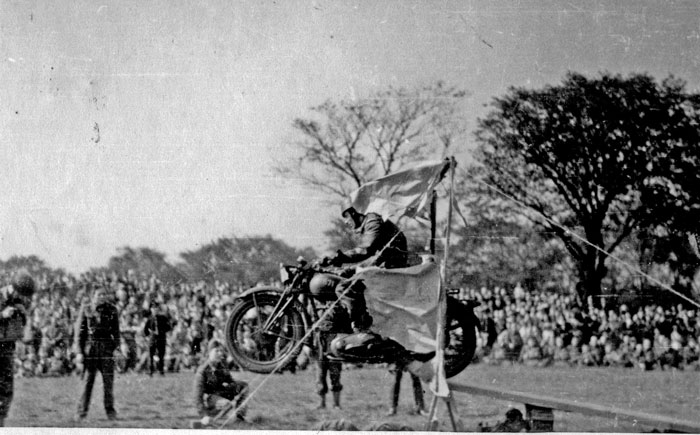  |
| A Section
advances...... |
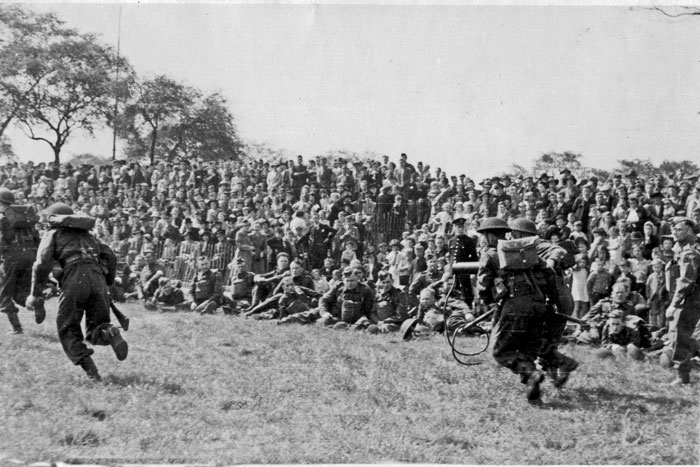  |
|
Casualty retrieval..... |
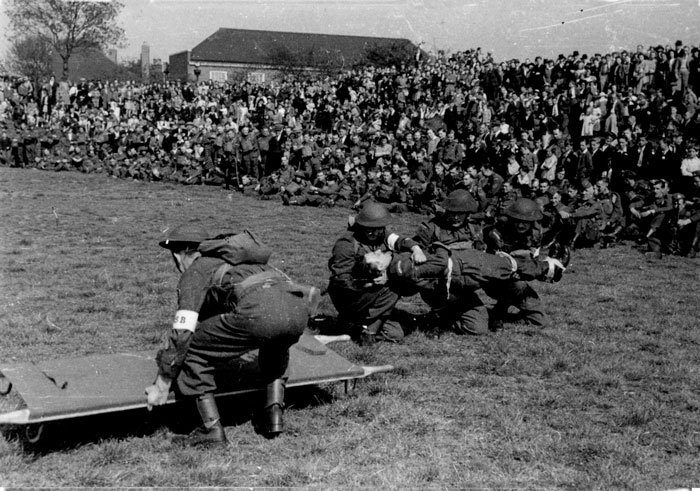  |
|
The Battalion C.O., Lt.-Col. J.
Pitkeathley, M.C., at the display..... |
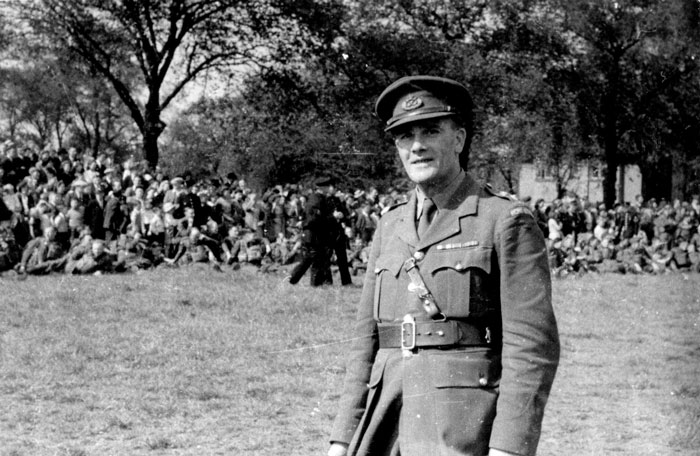  |
Many stories are told, usually humorous, of
"problems" arising during such Home Guard displays,
especially those associated with the firing of artillery
weapons such as that shown above. The 34th Battalion was
not immune from such attention: there appeared in the
local press in 1998 a memoir written by Mr. R. Mason of
Bilbrook:
"I remember
there was a public LDV demonstration at
Hickman Park, Bilston,
late summer 1940. There were hundreds of people
who came to see the large array of home-made
weapons shown in action – some good, some not so
good, some suicidal!
I was
only about 12 and all the kids sat on the park
fence with our backs to the road. One
demonstration was about three LDVs pulling back on
a spring in a long pipe until it clicked, then a
dummy shell, like a cannon ball, was popped in and
fired at a block of concrete – it rebounded.
We
watched it sail over the crowd and hit the back of
a horse-drawn milk cart in the street. The horse
raced off, wrecking everything in his path
including all the milk on the cart.
Later we
had our own LDV soldier at Sankey's works entrance
in Albert Street,
Bilston, dressed in the full kit including fixed
bayonet. He used to say that the German paras
would soon get by me, but not him (Mr. Talbot),
the works timekeeper and commissionaire, and
nobody who was late, or a stranger, ever did.
They
were dedicated, sparsely armed at first, but they
really did count later on. The Germans would have
died laughing in 1940, but later on, just died." |
Let us assume that such early teething troubles
had been sorted out by the time of this 1944 display.
Otherwise the expression on Col. Pitkeathley's face, as he
gazes at us from a distance of three-quarters of a century, would
perhaps have been somewhat less relaxed!
**********
Acknowledgement
Grateful
acknowledgement is made to Pam and the late Ben George for much of this
information and for
their generous permission
for its publication within this website; to the
knowledgeable and eagle-eyed members of
Austin Ruddy's "Remember Britain's Home Guard" Facebook
group for their assistance with the interpretation of
these images; and to Mr. R. Mason and the "Wolverhampton
Chronicle".
Images © Ben George
2017
|